“Even today, the Achuar people living on the border of Peru and Ecuador don’t even have a word for nature. They don’t think it exists. They see no separation between themselves and their surroundings.”
Damon Gameau, 2040: Join the Regeneration
December 1, 2023
Dear Friends,
Thank you for joining me for our 17th Annual Update, marking our journey since 2006. In this year’s message, I draw inspiration from theologians Sallie McFague and Ellen Davis, as well as marine biologist Ayana Johnson, to illuminate the path to climate restoration as a joyful and rewarding journey full of beauty, wonder, reverence, and, in particular, love. This ethos guides our work with landowners and Earth’s ecosystems, encompassing our latest initiative, Southern Climate Restoration Solutions, in addition to Rapidan Institute, StreamSweepers, and SoilKeepers.
How do our programs help the climate? When there is too much heat, our programs work to cool. Too much carbon and water vapor in the air – our programs work to return them to the ground. Too much nitrogen in the water – our programs work to hold it in the ground. Too few birds and wildflowers in our grasslands – our programs work to increase species diversity. Too much water running off the land – our programs increase soil water-holding capacity. From plastics to protozoa, we’ve spent years learning how to manage terrestrial and riparian landscapes to restore the climate and mitigate its harmful changes. We don’t just talk about climate; our staff nurtures the land and water to heal our planet from the ravages of modern industrial management in partnership with landowners, using custom-mixed seeds and amendments, and specialized equipment.
Launching: New Southern Climate Restoration Solutions Program
As an entrepreneurial organization, we chart our path based on data collection and field observations. It is an incremental, zigzag road led by an educated guess or hypothesis derived from experience in the field. Our growing realization has been that modifications in landscape management could conceivably be a climate solution that is as cost effective as innumerable carbon sucking machines running 24/7.
This hypothesis led the American Climate Partners Board of Directors to create a new program – Southern Climate Restoration Solutions – born of the belief that the land and waters of the Southeast region are uniquely suited to provide verifiable and cost-effective carbon dioxide removal (CDR) solutions. Consequently, ACP was honored to be selected as one of four partners by the USDA to support and expand measurement and monitoring of carbon in soil on working agricultural lands and to assess how climate-smart practices are affecting carbon sequestration. ACP has been tapped as partner in this effort for the southeast US (Virginia, Kentucky, Tennessee, North Carolina, South Carolina, Alabama, Georgia, Florida, Louisiana, Mississippi, Arkansas, Puerto Rico). This regional project sets our new program off and running at a good pace, and we look forward to embracing an expanded portfolio of organizational and individual partners with a shared spirit of esprit de corps.
The project supports NRCS’s nationwide implementation of a new official Conservation Evaluation and Monitoring Activity (CEMA 221), encouraging widespread adoption of conservation practices by diverse producers for measuring soil organic carbon stocks before and after practice implementation.
Harnessing a coalition we are building from scratch, including a new staff hire and a greatly expanded circle of exciting new public/private partnerships across the region, we will focus on identifying, developing, encouraging, and establishing carbon dioxide removal solutions for landscape management categories, including regenerative forests and grasslands, wildlands, and agriculture, synergized with the most important category of all, people.
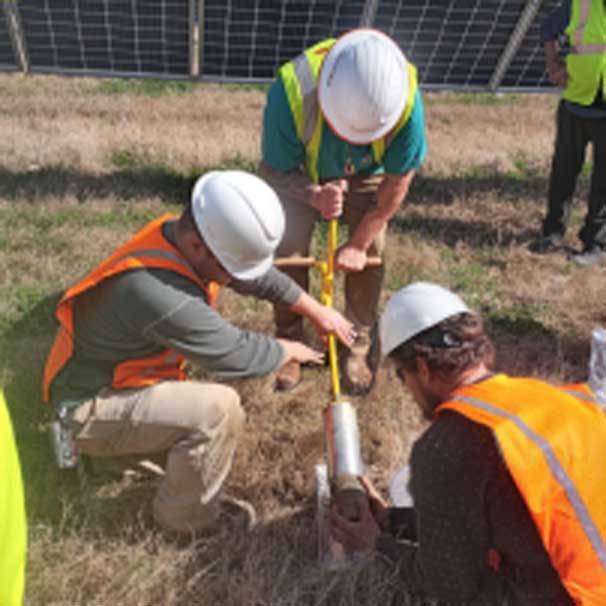
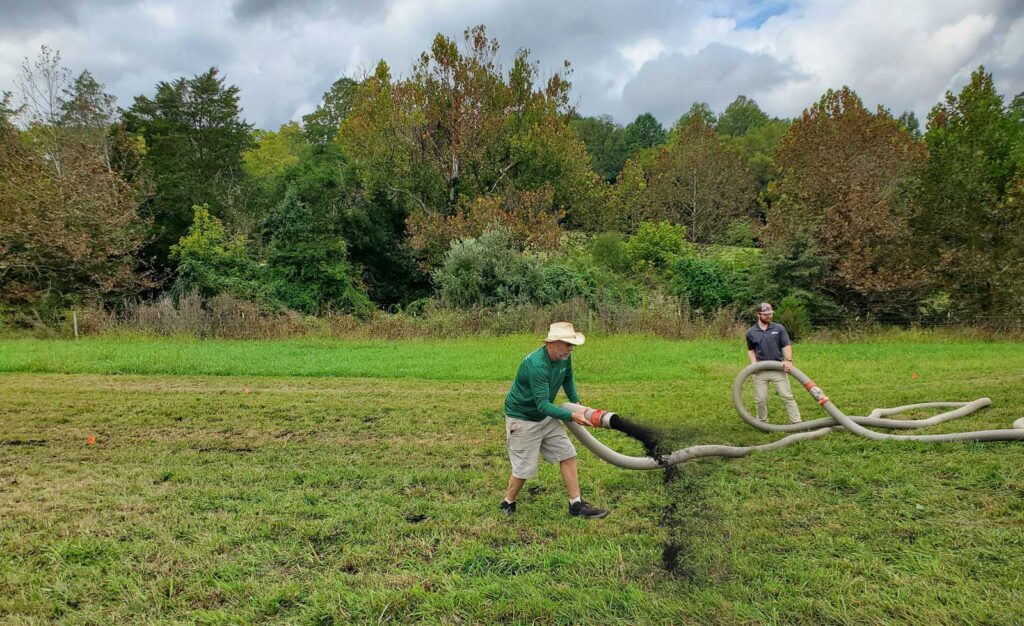
You can donate to Southern Climate Restoration Solutions here.
Rapidan Institute
River floodplain wetlands are a highly efficient carbon sink. Dams inundate these areas, severely limiting their climate mitigation capacity. In addition, rivers behind dams release methane. While not having a long-term negative effect on climate, it does have a consequential short-term effect.
Old mill dams are the leading cause of the decline in river herring, a keystone species for marine and freshwater ecosystems. For roughly 250 years, migratory fish, specifically Herring, Shad, and Alewife (all in the river herring family) have been blocked from their historical spawning grounds upstream of Rapidan, Virginia, by the Rapidan Mill Dam. Based on recent work by the Smithsonian Environmental Research Center and the University of Maryland, we know these same fish are still arriving today at the dam’s base, trying to get through.
The Rapidan Mill Dam is the #1 ranked dam removal project in the Chesapeake Bay watershed. According to American Rivers, it is one of the top dam removal projects in the US. As a result, in 2020, we launched the Rapidan Fish Passage Project (RFPP), to open the last remaining hurdle between the Atlantic Ocean and the Blue Ridge Mountains in the Rapidan watershed of Virginia. Dam removal is a complicated, lengthy process involving multiple governmental and local requirements. Although we hope to get federal assistance in the future, the expense of applications and reports are supported by your donations alone.
With the help of generous donors, in 2021-2022, we completed Phase I Due Diligence investigations and reports. In 2023, we launched a second phase of due diligence, tackling projects such as preparing a lengthy report and application to the Federal Energy Regulatory Commission (FERC), which was required before we could commence physical alteration of the former power-generating structure. We also explored traditional public/private grants and donations to fund the project, and an innovative entrepreneurial approach to creating a dam removal-based river restoration mitigation bank.
After meeting with the US Army Corps of Engineers, we decided that the best path forward is the traditional one – so with support from the Virginia Department of Wildlife Resources and other government and non-profit partners, we submitted a multi-million dollar proposal to the National Oceanic and Atmospheric Administration’s Marine Fisheries Service for a four-year grant to fund not only alteration of the dam but also upstream and downstream riverbank restoration. We are also in the process of submitting a similar proposal to the US Fish and Wildlife Service.
In 2024, while we await word about federal funding, we must complete various reports for FERC, including a response to a recent dam inspection. These tasks take considerable staff time, and currently lack funding.
If we can love American Shad, our Founding Fish, we may help restore our climate – and we have made it this far only with the support of Rapidan Institute and RFPP donors, partners, and founders.

You can donate to Rapidan Institute and the Rapidan Fish Passage Project here.
StreamSweepers
American Climate Partners continue to reduce humanity’s carbon footprint by removing and recycling plastics in Virginia rivers and streams. The pioneering work of StreamSweepers was born a decade ago out of a concern about the dangerous health impact of tires and other solid waste on humans and aquatic animals; the public’s understanding of the impact of plastics in tires and other solid waste in our waterways is just beginning.
These plastics break down into chemicals that harm trout and salmon. Our research in collaboration with the National Institute of Health – National Cancer Institute shows that area rivers now contain endocrine disrupting compounds that mimic hormonal activity in human test cells. StreamSweepers has excavated and disposed of tens of thousands of tires and thousands of tons of additional trash since 2012 through recycling. Next year, the Clinch River Cleanup begins its eighth and, we hope, final year of cleanup required along one of the most beautiful rivers on the East Coast.
What’s next for the Sweepers after the Clinch? There are opportunities to move farther into Appalachia, where we have convened a multi-state rivers cleanup consortium in the Big Sandy watershed of Southwestern Virginia, Eastern Kentucky, and Southeastern West Virginia.
If you haven’t seen it in person, it’s impossible to describe the impact of catastrophic flooding and the scale of dumping in some of the most beautiful valleys and hollows of this region. Because existing solid waste facilities have either shut down or reached capacity, new infrastructure (facilities and equipment) will need to be built and procured to dispose of the rusting cars, trucks, appliances, and destroyed houses found in the floodplains and terraces of this region.
A compounding problem is the staggering scale of invasives in riverbanks and hollows. This matters because river ecosystems depend on native trees and shrubs to provide suitable conditions for the macroinvertebrates that fish and other animals depend on. Invasives like Kudzu and Japanese Knotweed completely choke out native vegetation, which is critical for mountain fish to thrive.
StreamSweepers recently convened a scoping conference at Breaks Interstate Park with early stakeholders. Our objective was to explore the concept of creating the consortium with scale and gravitas to match the magnitude of the problems. As conceived, the consortium will possibly be a new non-profit organization focused on a multi-state cleanup project with the goal of nurturing economic and job development in communities navigating the transition from a coal economy.
Appalachia has given up so much for the rest of us. The StreamSweepers program is a key step in any landscape restoration effort to give back what’s been lost.
StreamSweepers is the only one of our four programs that is 100% dependent on philanthropic donations.
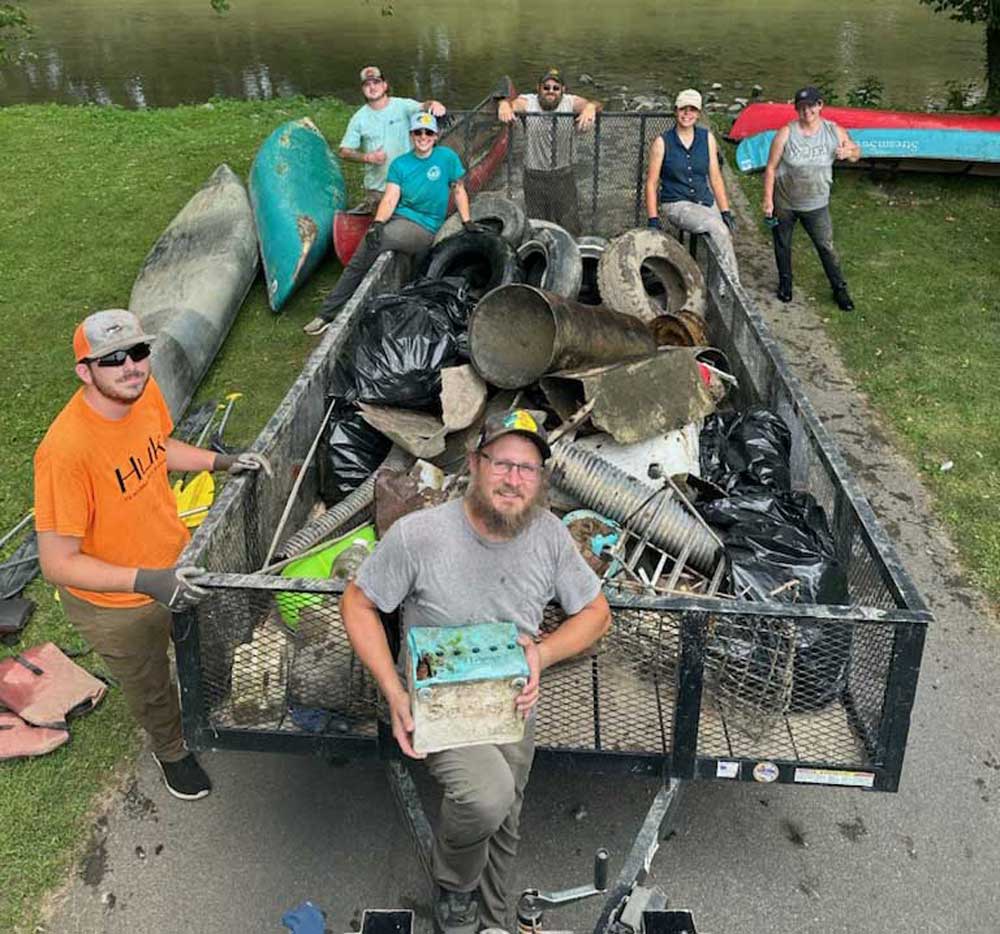

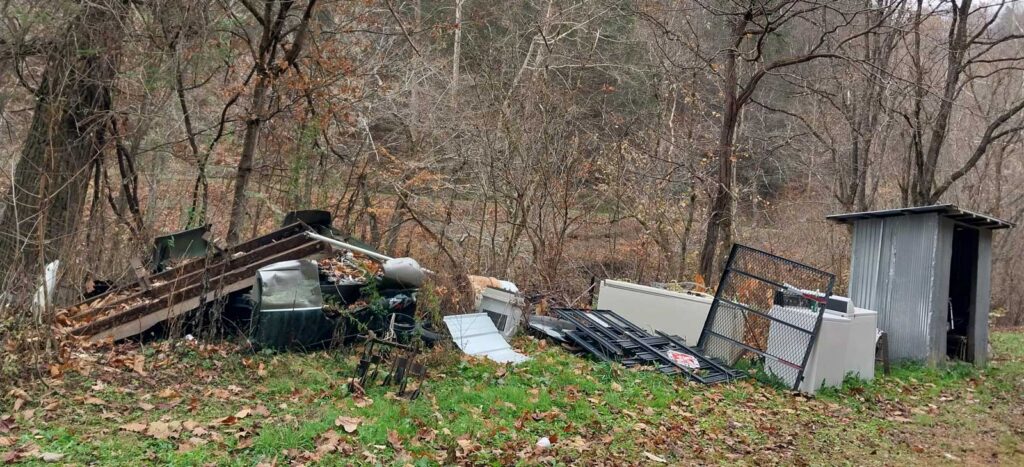
You can donate to StreamSweepers here.
SoilKeepers
NASA reports that there is three times more area in monoculture grass lawn than corn in the U.S. At American Climate Partners, we experiment with soil amendments to increase water-holding capacity and carbon storage, and the health of the microbes in the soil. Australian soil health guru Christine Jones says, “The microbes know what to do,” which has become a mantra at American Climate Partners and our modus operandi has become to first love the microbes. We believe that nature, like our bodies, wants to heal and that often, with a good diet, soil organisms, like our own cells, figure out the rest.
Today, nearly everyone in the Mid-Atlantic has at least a little lawn, and each of us can take significant action to fix our own portion of the climate problem by mindfully managing our grass. Through the capture of atmospheric carbon via regenerative lawn management, we have helped households offset their carbon footprint and, in some cases, approach net-zero.
Assuming average soil, and average carbon footprint, through capture of atmospheric carbon via regenerative management we estimate it takes 50 acres to offset the average household’s emissions. Soils are generally capable of this for 10-20 years, after which they are saturated and no further capture can take place. If only 25 acres are available, then roughly 50% of emissions can be offset. Note this simple analysis does not include the carbon added via regenerative amendments.
The point is, each of us can take significant action to fix the portion of the climate problem we are responsible for through how we manage our grass!
In 2024, SoilKeepers will test and measure the impacts of new formulations of our Biogenicals for lawns, hay fields, and pastures on soil biology to meet emerging Southern Climate Restoration Solutions program goals, including, but not limited to, Carbon Dioxide Removal (CDR) and stormwater retention for solar energy installations.
If we can learn to respect and make use of our soil organisms, we may save ourselves; we have only begun to learn how to do this through the generosity of SoilKeepers donors, many of whom are also clients.
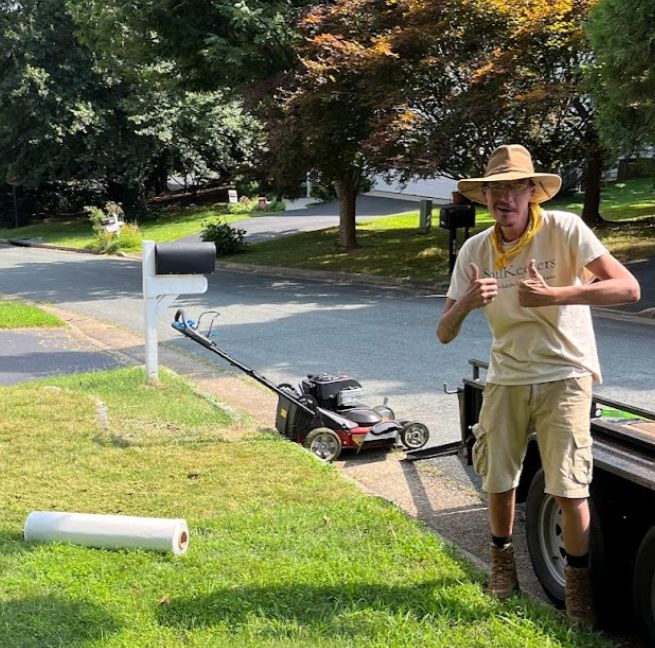
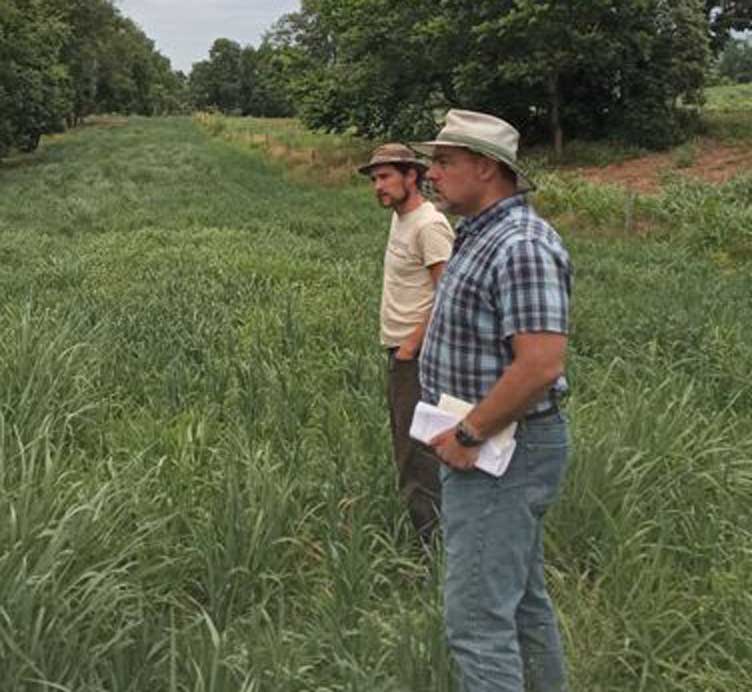
You can donate to SoilKeepers work here.
In closing
I am compelled to emphasize the people part of this work. There is a need for organizations like ours – made up of people who work with their minds, hearts, and hands to tell and tend a new story of how we turn our love for the natural world, our mother Earth, into action to restore its original balance and health for the future of us all.
Our journey has hardly begun and words cannot express my gratitude for everyone that has helped us get this far. On behalf of our Directors, Advisors, and Staff, we thank you for considering a gift to our work.
It is literally the case that we cannot do all this alone.
Happy Holidays,

Michael C. Collins
Executive Director
American Climate Partners
Down memory lane… See our 2022 Annual Update
